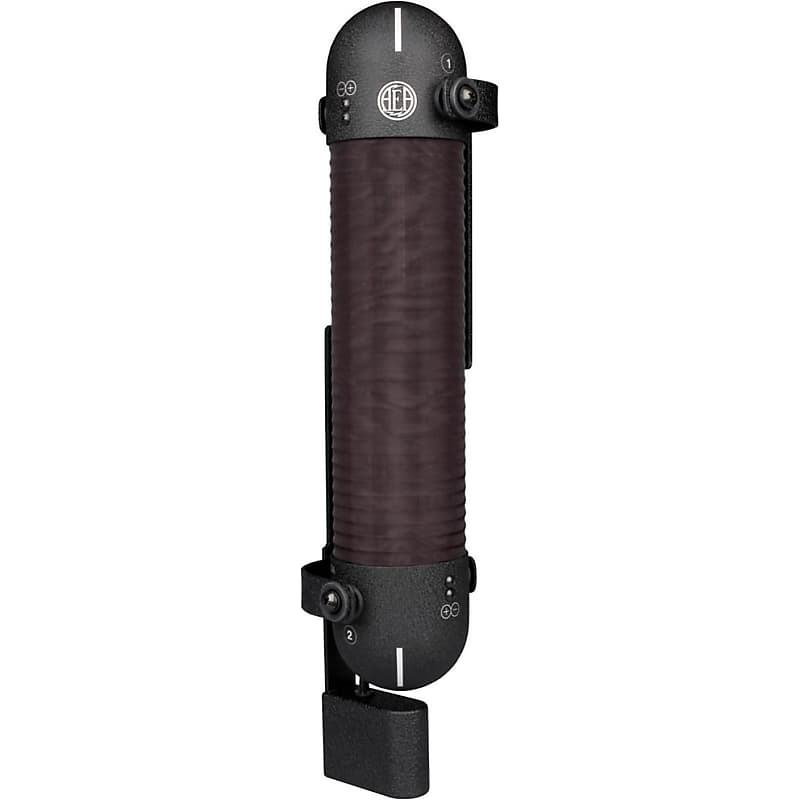

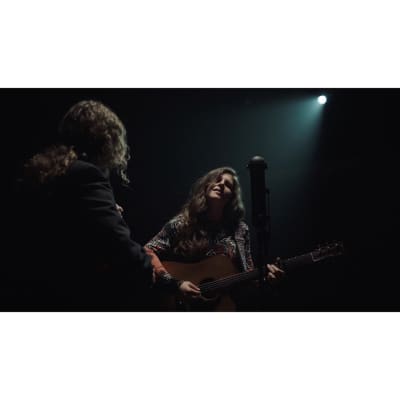
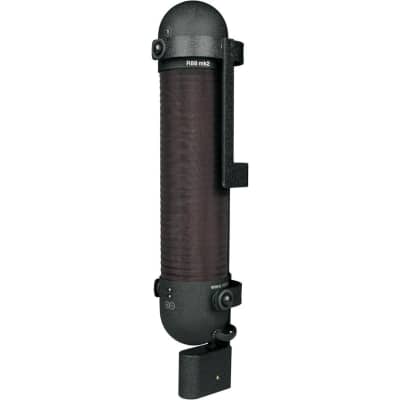
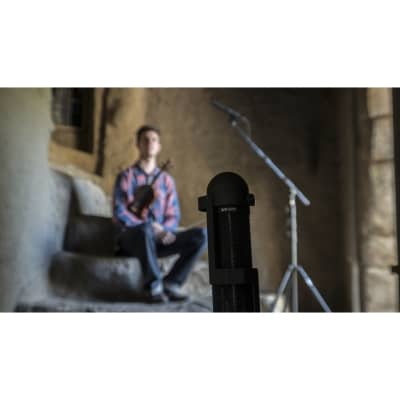
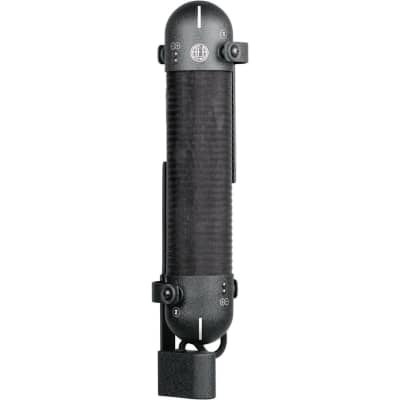
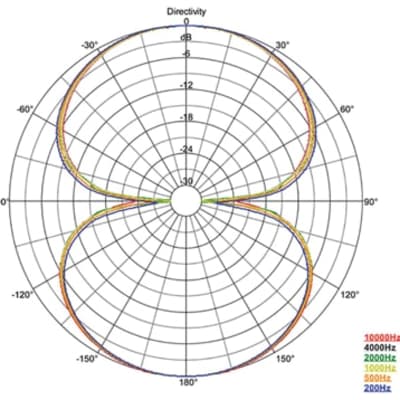
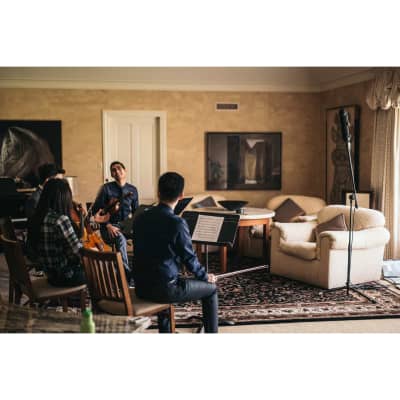
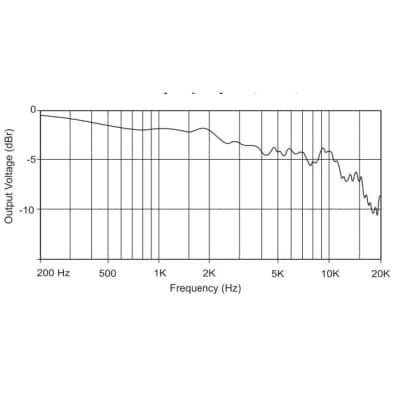
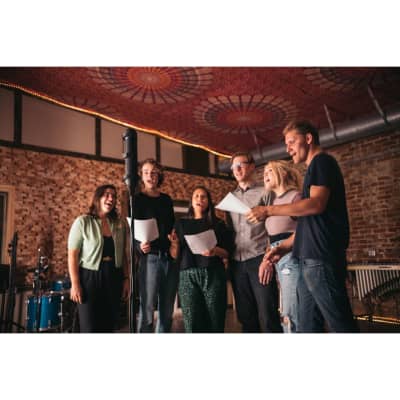
AEA R88 Stereo Ribbon Microphone
Price$2,299
Free Shipping
Free Shipping
from Athens, GA
Listed:over a month ago
Views:751
Watchers:25
Offers:3

Athens, GA, United States
30-Day Return Policy
Enjoy peace of mind with your new gear










AEA R88 Stereo Ribbon Microphone
The stereo R88mk2 ribbon mic captures sound as your ears hear it, with an honest and open tonality. The R88 effortlessly records complex sources like drums, strings, piano, and other instruments that produce intricate transients, harsher highs, and bellowing lows.
A STEREO MICROPHONE LIKE YOUR OWN EARS - The stereo R88 captures a space as it sounds live and in person, with all the present subtlety and nuance. Its expansive frequency response and balanced low end make it superbly effective when capturing the full breadth of sound from the back of a room or above a drum set. Alongside the mono AEA N8, it boasts the widest frequency range of any mic in the AEA lineup and effortlessly manages more complex source audio like drums, strings, piano, and other instruments that produce intricate transients, harsher highs, and bellowing lows. The Blumlein configuration of the ribbons allows for a sweeping range of perspective, so an entire ensemble and room can be captured by the R88 alone.
THE ENGINEER’S SECRET WEAPON - The R88mk2 is the engineer’s secret weapon, offering a level of detail and balance in recording like no other microphone available. Packaged in a sleek, five-pound black shell designed for quick setup, it’s an excellent choice for remote recording. Particularly well suited for the rock, roots, classical, Americana and jazz genres, the R88mk2 has such versatility that engineers like John Cuniberti use it as their one mic to capture an entire band performing live in the same room. There is a reason that legendary Blackbird Studios in Nashville owns five R88s.
“The R88 is the most realistic mic iIve ever used. I still get confused if during playback the piano is coming out of the speakers or if the pianist is still playing in the room.” - Jon Castelli (Lady Gaga, Ariana Grande, Kesha)
A Rich History - The design of the R88mk2 borrows from serious stereo recording tradition. In 1931, EMI engineer Alan Blumlein invented stereo recording by demonstrating the natural reproduction of the soundstage in one of the Abbey Road studios in London. Today, Blumlein’s XY coincident recording technique lives on in the AEA R88mk2, which uses two figure-of-8 ribbons for producing an authentic representation of a performance. The pair of elements are angled in perfect phase at 90 degrees and mounted in close proximity to each other along the vertical axis of the microphone. As an alternative to Blumlein’s technique, the microphone can also be used for mid-side (MS) stereo, providing excellent mono compatibility and full control over the width of the stereo image. Either way, the R88mk2 is so easy to use that any recording novice can do it. Simply choose where to place the mic and hit record. It’s that easy.
A FAR-FIELD RIBBON FOR CREATIVE RECORDING - As a stereo far-field ribbon microphone, the R88mk2 was designed to capture balanced sound from long distances. Sound sources should be measured in feet rather than inches away from the mic. From 16 inches to 20 feet, the mic retains its full spectrum and incredible low end. When positioned closer than 16 inches, the mic adds proximity effect. When carefully used, this proximity effect can beef up thin sounds — either voices or instruments. Don’t worry about loud sources, either. The R88mk2 can handle 165+ dB SPL at 1 kHz allowing you to position it up-close to avoid room tone if needed. It will not be hurt by loud sources and can be positioned against a stereo guitar amp and other loud instruments.
YES, THERE’S A MATCHING PREAMP - Since the R88mk2 is a dual passive ribbon microphone, the preamp is critical for optimum performance. Preamp gain should be at least +60dB or higher and the preamp should have a very high impedance. It’s the same requirement with all passive ribbon mics. To guarantee consistent, full-range ribbon sound, we recommend AEA’s RPQ2, RPQ500 and TRP2preamps, which were specially designed for ribbon microphones. However, preamps with above a 5K ohm impedance found in many live soundboards are adequate for guitar amps and other louder instruments. On quiet sound sources or for distance recording, an AEA preamp is highly recommended. "The AEA R88 has been an important part of my drum recording technique for the 6 years or more. it’s been on every session from Alanis Morissette to Jason Mraz and from The Strokes to the White Stripes. it handles high levels well. it’s tone is warm but with with great detail and takes well to heavy processing. i wouldn’t be without it on a tracking session." - Joe Chiccarelli (The White Stripes, The Strokes, Morrissey) Mix || “The R88 sounded absolutely delicious on upright bass, delivering a round, warm, fat bottom without being tubby. The roll-off on the top of the R88 fit perfectly with this instrument, making it sit nicely in the mix. The mic nicely rounds the attack consistently up the neck, providing great definition. On playback, the upright player was astonished at the sound.” – Kevin Becka Sound On Sound || “This is a very impressive microphone and one which is without equal as far as I know. It will appeal to the purist classical-music engineer without doubt, but it also has a much wider role in the studio. Long live the ribbon revolution!” – Hugh Robjohns Tape Op || “I've also had great success using the combo on a horn section 15 ft from the drum kit. Recording two Ampeg Gemini guitar amps in stereo was totally killer. On piano, I was able to use the placement and nulls to effectively control the bleed and frequency response of a baby grand track. As a room mic for percussion ensemble overdubs, for backing vocals, etc. - all amazing.” – Chris Koltay
Technical Specifications
Operating Principle Pressure gradient transducer Directional Pattern Bidirectional Frequency Range
< 20 Hz to 20 kHz
Maximum SPL
165 dB SPL (1% third harmonic > 1 kHz)
Sensitivity
2.5 mV/Pa (-52 dBV) into unloaded circuit
Output Impedance
270 Ω broadband
Recommended Load Impedance
1.2 kΩ or greater Phantom Power Not required or recommended Polarity Pin 2 & 4 high for positive pressure
at the front of the microphone.
Off Axis Response
Bidirectional
Polar Response Horizontal
Level changes with angle,
frequency response is consistent,
-35dB null at 90º / 270º
Polar Response Vertical
Level changes with angle,
reduced HF response above and below 0º / 180º,
-25 dB null at 90º / 270º
Transducer Element Material
Pure aluminum corrugated ribbon
Transducer Thickness
1.8 μm
Transducer Width
0.185 in (4.7 mm)
Transducer Length
2.35 in (59.7 mm)
Dimensions /Weight Height: 2.35 in (59.7 mm)
Width: 15 in (38.1 cm)
Depth: 3 in (7.62 cm)
Weight: 2 lbs. 9.8 oz. (1.19 kg)
Connector Type
XLR-5M, includes breakout cable - 2 XLR-3M
Shipping Weight 5 lbs. 3 oz. (2.36 kg)
Accessories Included
Storage /Shipping case
User Manual
Swivel Adapter
Custom Protective Mic Sleeve
XLR-5M Breakout Cable
| Condition | |
| Brand | |
| Model |
|
| Categories | |
| Electronics |
|
| Polar Pattern |
|
| Wired/Wireless |
|
| Microphone Type |
|